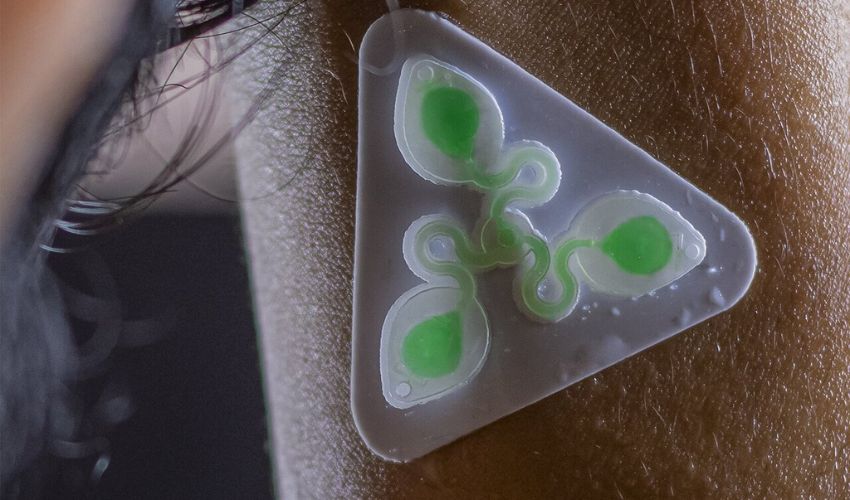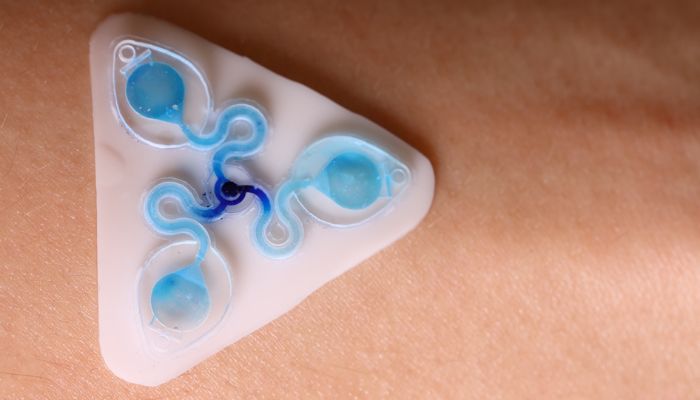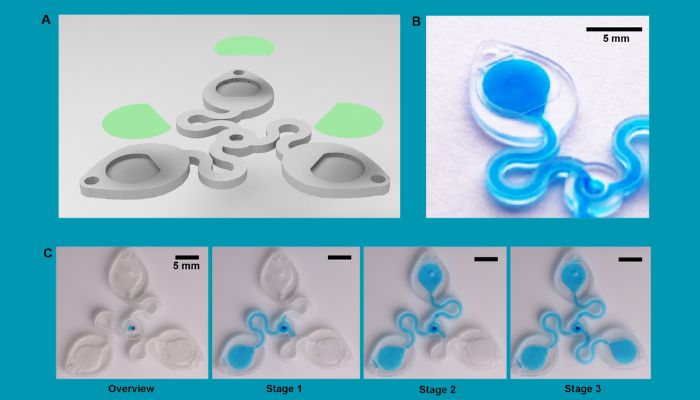A New 3D Printed Sweat Sensor Could Help Monitor Health

Though there are many benefits to the summer months, it is safe to say that not everything about the season is fun. Notably, sweating in the heat is an uncomfortable phenomenon that also can leave embarrassing marks on clothes as well as make us agitated and smelly. But did you know that sweat can actually be a key to helping patients to track their health? Or that’s what researchers at the University of Hawai’i at Mānoa College of Engineering are betting on with a new project where they are using an innovative 3D printed wearable sweat sensor, nicknamed the “sweatainer,” in order to obtain key information about health and diseases.
Sweating is actually extremely beneficial to the body. It helps us to regulate our body temperature as well as flesh out toxins. But it is also a vital resource for doctors for tracking different health indicators. In this case, the researchers point to the fact that it is able to not only provide clues to dehydration, fatigue and blood sugar levels, but also help monitor more serious conditions. These include cystic fibrosis, diabetes and heart failure. Considering that there are an estimated 40,000 children and adults living with cystic fibrosis, 37.3 million adults living with diabetes and 6.5 million with heart failure in the United States alone, this could be crucial to helping maintain the health of these individuals. And 3D printing offered the researchers the flexibility needed to create this innovative device.

The sweat sensor is designed to go directly on the skin (photo credits: Ray Research Group)
The Benefits of the 3D Printed Sweat Sensor
Though perhaps not as widely discussed as procedures like blood drawing, sweat collection is already used as part of testing for different diseases, especially cystic fibrosis. However, traditional approaches can be costly and difficult as they require the use of absorbent pads or microbore tubes pressed against the epidermis to capture sweat. This requires of course trained personnel, special handling and costly laboratory equipment. Even with the emergence of wearable devices, they are still single use. But thanks to the use of additive manufacturing, the researchers were able to create this new wearable device that they claim expands the capability of wearable sweat devices and will be a giant leap forward in sweat analysis.
The sensor was created using a commercial DLP printer (though the brand was not mentioned) and is a small, wearable device that is similar in size to a child’s sticker. It is able of collecting and analyzing sweat and has a number of unique features that the researchers believe will help drive innovation towards more accessible, convenient and insightful personal health monitoring. For example, the press release mentions the “multi-draw” sweat collection method which could allow for the collection of multiple, separate sweat samples for analysis on the device or in a lab. According to the researchers, this makes the sweat collection more efficient and could help open up possibilities for at-home testing, storing samples for future research and better integration with existing health monitoring methods. The move towards more personalized, at-home health in particular is a trend that we have seen increasingly in medical 3D printing overall as it is one of the benefits of using the technologies in the sector.
Tyler Ray, one of the authors of the research as well as a Department of Mechanical Engineering Assistant Professor, concludes, “3D printing enables an entirely new design mode for wearable sweat sensors by allowing us to create fluidic networks and features with unprecedented complexity. With the sweatainer, we are utilizing 3D-printing to showcase the vast opportunities this approach enables for accessible, innovative and cost-effective prototyping of advanced wearable sweat devices.” If you wish to learn more, you can access the entire research paper HERE.

A diagram showing how the 3D printed sweat sensor works (photo credits: Ray Research Group)
What do you think of this 3D printed sweat sensor? Let us know in a comment below or on our LinkedIn, Facebook, and Twitter pages! Don’t forget to sign up for our free weekly Newsletter here, the latest 3D printing news straight to your inbox! You can also find all our videos on our YouTube channel.
*Cover Photo Credits: Roxanne Kate Balanay, Tyler Ray/University of Hawai’i






